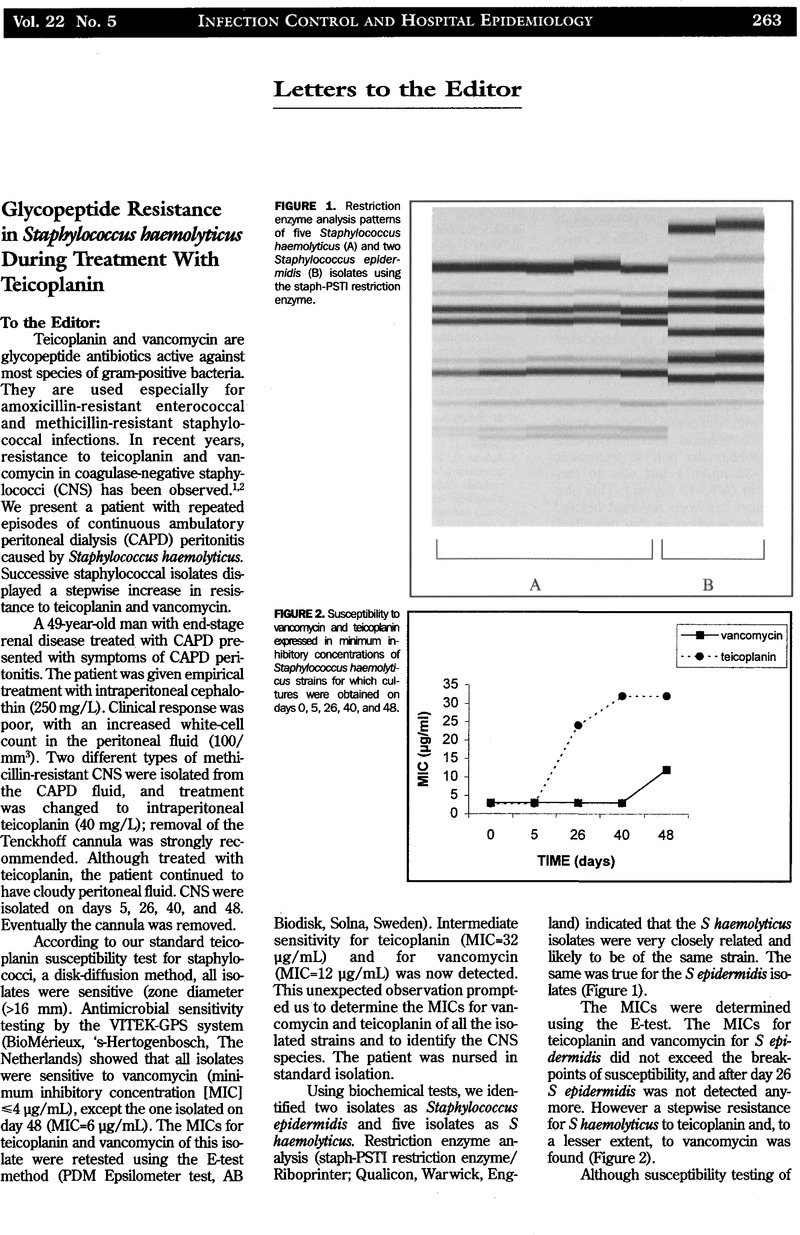Crossref Citations
This article has been cited by the following publications. This list is generated based on data provided by Crossref.
Ertem, G. Tuncer
Sari, T.
Hatipoglu, C. Ataman
Yildiz, E.
Zarakolu, P.
and
Oral, B.
2010.
Peritonitis Due to Teicoplanin-Resistant Staphylococcus Haemolyticus.
Peritoneal Dialysis International: Journal of the International Society for Peritoneal Dialysis,
Vol. 30,
Issue. 1,
p.
117.
Cavalcanti, Alexandre B
Goncalves, Anderson R
Almeida, Claudia S
Bugano, Diogo DG
and
Silva, Eliezer
2010.
Teicoplanin versus vancomycin for proven or suspected infection.
Cochrane Database of Systematic Reviews,
Kristóf, K.
Kocsis, E.
Szabó, D.
Kardos, S.
Cser, V.
Nagy, K.
Hermann, P.
and
Rozgonyi, F.
2011.
Significance of methicillin–teicoplanin resistant Staphylococcus haemolyticus in bloodstream infections in patients of the Semmelweis University hospitals in Hungary.
European Journal of Clinical Microbiology & Infectious Diseases,
Vol. 30,
Issue. 5,
p.
691.
Czekaj, Tomasz
Ciszewski, Marcin
and
Szewczyk, Eligia M.
2015.
Staphylococcus haemolyticus – an emerging threat in the twilight of the antibiotics age.
Microbiology,
Vol. 161,
Issue. 11,
p.
2061.
Bakthavatchalam, Yamuna Devi
Sudarsanam, Thambu David
Babu, Priyanka
Munuswamy, Elakkiya
Muthuirulandi Sethuvel, Dhiviya Prabaa
Devanga Ragupathi, Naveen Kumar
and
Veeraraghavan, Balaji
2017.
Methicillin-Susceptible Teicoplanin-Resistant <i>Staphylococcus haemolyticus</i> Isolate from a Bloodstream Infection with Novel Mutations in the <i>tcaRAB</i> Teicoplanin Resistance Operon.
Japanese Journal of Infectious Diseases,
Vol. 70,
Issue. 4,
p.
458.
Barış, Ayşe
Malkoçoğlu, Gülşah
Büyükyanbolu, Ecem
Aslan, Feride Merve
Bayraktar, Banu
and
Aktaş, Elif
2020.
Evaluation of Teicoplanin Resistance Detected by Automated System in Coagulase Negative Staphylococci: A Comparison with Gradient Test and Broth Microdilution Methods.
Current Microbiology,
Vol. 77,
Issue. 11,
p.
3355.
Eltwisy, Hala O.
Twisy, Howida Omar
Hafez, Mahmoud HR
Sayed, Ibrahim M.
and
El-Mokhtar, Mohamed A.
2022.
Clinical Infections, Antibiotic Resistance, and Pathogenesis of Staphylococcus haemolyticus.
Microorganisms,
Vol. 10,
Issue. 6,
p.
1130.



